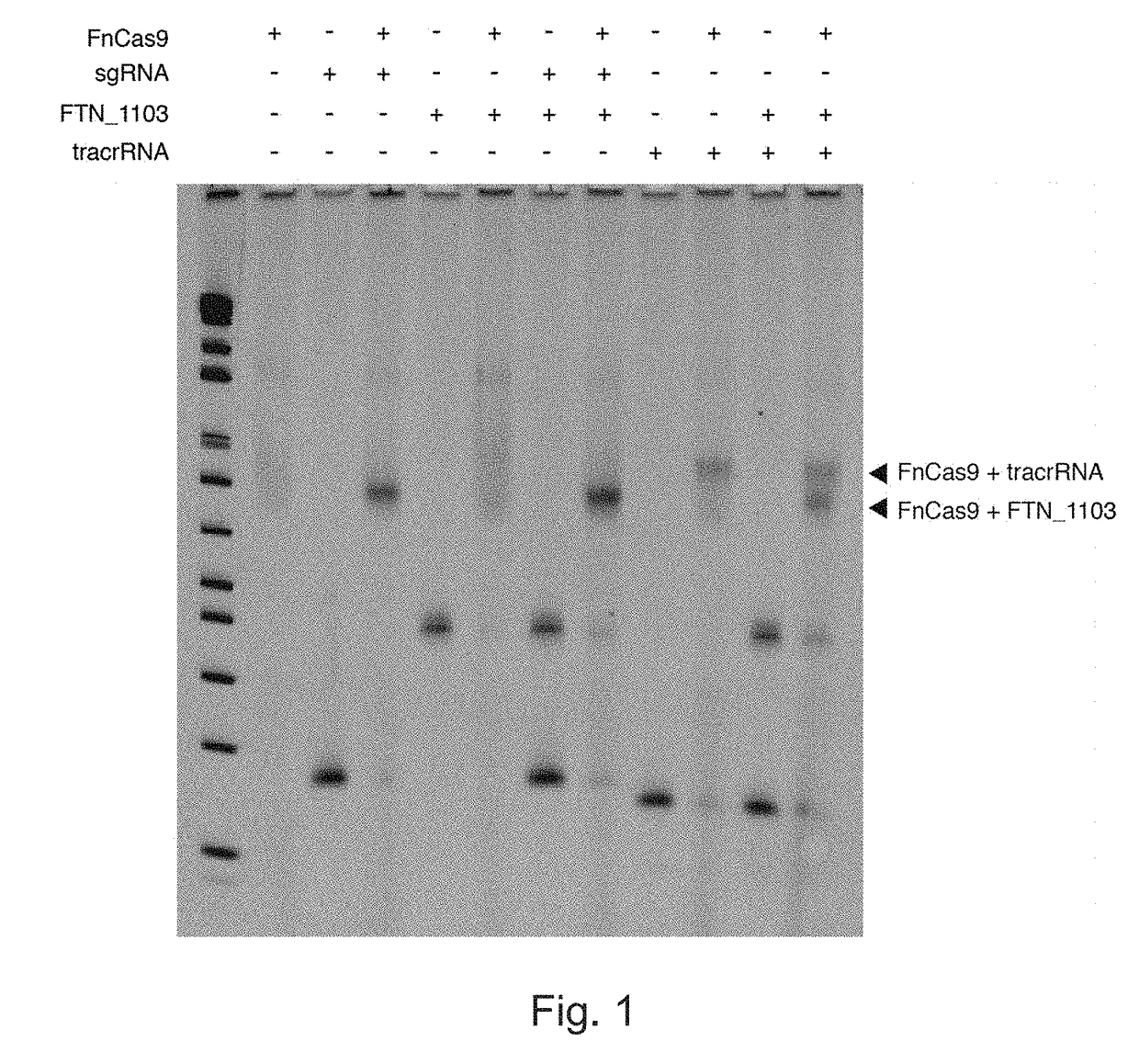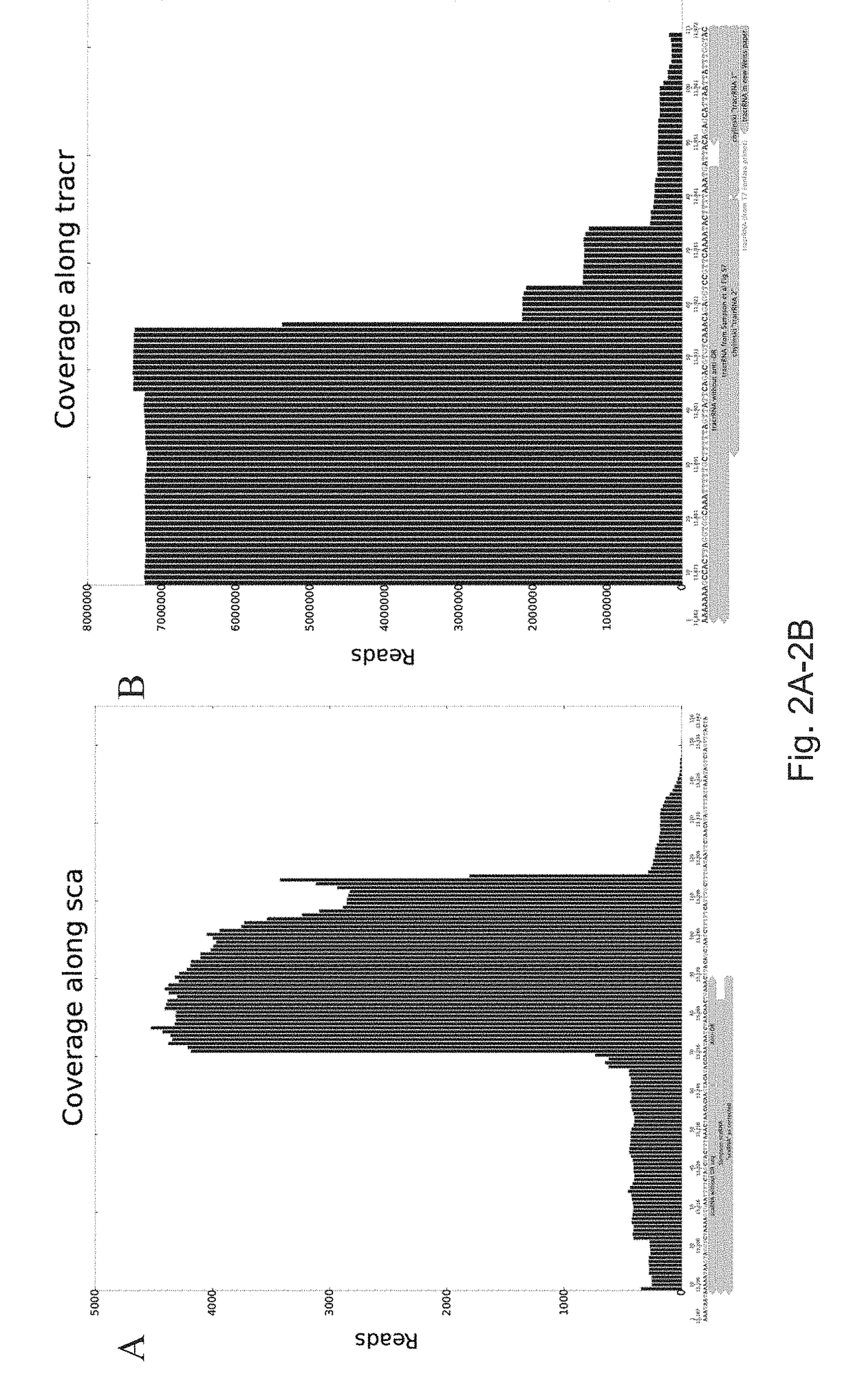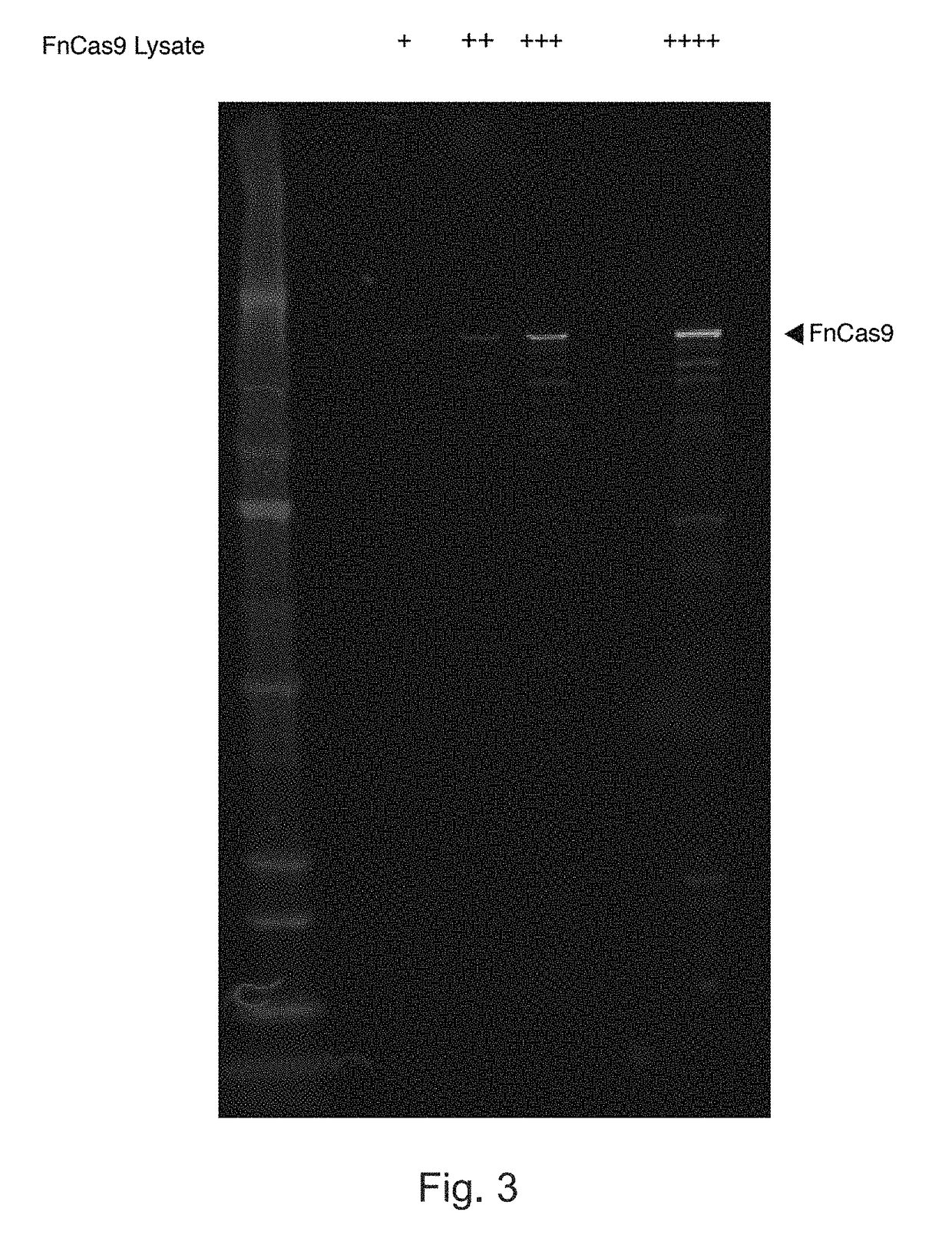Rna-targeting system
a technology of rna-binding domains and target cells, applied in the field of rna-targeting systems, can solve the problems of difficult reprogram in practice, significant off-target effects, and challenging engineering targets, and achieve the effects of improving the efficiency of rna-binding domains
- Summary
- Abstract
- Description
- Claims
- Application Information
AI Technical Summary
Benefits of technology
Problems solved by technology
Method used
Image
Examples
example 1
f In Vitro Transcribed sgRNA
[0441]The inventors assessed the ability of Francisella novicida Cas9 (FnCas9) to bind both native and chimeric RNAs in vitro. It was found that purified FnCas9 successfully bound in vitro transcribed scaRNA and tracrRNA, as well as fusion RNA. FnCas9's binding to native mRNA, with and without small RNAs, was also tested, and found that it successfully bound the native FTN_1103 mRNA (FIG. 1).
example 2
ization of Endogenous scaRNA / tracrRNA Transcripts
[0442]The CRISPR locus from F. novicida was expressed in E. coli and total RNA-seq was performed to characterize the endogenous scaRNA and tracrRNA transcripts. The scaRNA and tracrRNA were present and underwent several states of processing (FIG. 2). FIG. 2A provides a graph representing the processing states of scaRNA as determined by RNA sequencing (RNA seq). FIG. 2B provides a graph representing the processing states of tracrRNA as determined by RNA sequencing.
Example 3: Analysis of Expression of Exogenous FnCas9 in E. coli
[0443]In order to test FnCas9's binding and cleavage in vivo, it was determined that the FnCas9 in the Francisella novicida CRISPR could be expressed from its native promoter in E. coli. Via Western blot, it was verified that full-length FnCas9 was expressed successfully (FIG. 3).
Example 4: Reconstitution of FnCas9 mRNA Cleavage in E. coli
[0444]After determining that the components of the Francisella novicida R...
example 5
haracterization of CRISPR / Cas RNA Targeting System
[0445]Characterizing Endogenous scaRNA / tracrRNA Transcripts
[0446]Since CRISPR RNAs often undergo enzymatic maturation, further immunoprepcipitation and sequencing (IP-seq) of an epitope-tagged FnCas9 is performed to reveal the processing state of Fn RNAs in their bound and unbound states (FIG. 5).
[0447]Additional Biochemical Characterization
[0448]The identified mature Fn RNA sequences are in vitro transcribed and tested with affinity purified FnCas9 protein in gel shift assays, in order to characterize their biochemical interaction with the endogenous lipoprotein (blp) mRNA target. Different regions of the scaRNA, tracrRNA, and mRNA are mutated to facilitate localization of the guide sequence actually involved in hybridizing with the target lipoprotein mRNA. To gain additional structural insight, FnCas9 in complex with its guide and target RNAs is crystallized and characterized.
[0449]Recognition Rules of FnCas9 to a Target mRNA
[0450]...
PUM
| Property | Measurement | Unit |
|---|---|---|
| weight | aaaaa | aaaaa |
| density | aaaaa | aaaaa |
| density | aaaaa | aaaaa |
Abstract
Description
Claims
Application Information
 Login to View More
Login to View More - R&D
- Intellectual Property
- Life Sciences
- Materials
- Tech Scout
- Unparalleled Data Quality
- Higher Quality Content
- 60% Fewer Hallucinations
Browse by: Latest US Patents, China's latest patents, Technical Efficacy Thesaurus, Application Domain, Technology Topic, Popular Technical Reports.
© 2025 PatSnap. All rights reserved.Legal|Privacy policy|Modern Slavery Act Transparency Statement|Sitemap|About US| Contact US: help@patsnap.com



